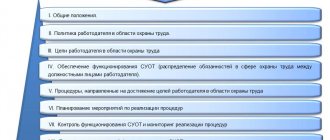Application
The main thing that the size of the key rate affects is what interest rates will be on loans and deposits for private clients and companies.
The lower the value, the more attractive terms banks will take a loan from the Central Bank. This means they will be able to provide loans to their clients at a lower interest rate. If the rate increases, then banks will be forced to switch to higher interest rates.
The situation with deposits is similar - the higher the percentage at which the Bank of Russia accepts deposits, the better conditions commercial banks will be able to offer their clients. And vice versa - when the rate decreases, the line of issued deposits loses its attractiveness, since the banks themselves arrange deposits with the Central Bank at a lower interest rate.
Loans and deposits: how do they depend on the key rate?
When the key rate decreases, do consumer loans become more expensive or cheaper? How do mortgage rates depend on the key rate? If the key rate goes up, then the rates on deposits also become higher? Detailed questions concern many people. I. It happens that employees turn to the HR department for advice. We’ll tell you how to answer a personnel officer to questions of this kind.
Loans
Commercial banks cannot simply take money from the Central Bank and issue it in the form of loans to individuals or businesses. The fact is that the Bank of Russia issues funds at the key rate only for a short period of 7 days. However, a mortgage is a long-term loan for several years (sometimes for 25). Therefore, to issue loans, banks must have other sources of financing (for example, deposits). But if there are no such sources, then the bank turns to the Central Bank for help. This situation arose with Otkritie Bank in 2020: depositors began to withdraw their funds from the bank and a “hole” formed in the bank. It was the Central Bank that came to the rescue to close it.
Thus, adjustments to the Central Bank’s key rate affect changes in the rates at which banks offer loans (including mortgages) to the population. And if the key rate decreases, then this is a signal to reduce rates on bank loans.
Recently the key rate has been decreasing. So, for example, if on September 19, 2020 its size was 10 percent per annum, then a year later (as of September 18, 2020) the key rate dropped to 8.5 percent. Moreover, the Central Bank of the Russian Federation reports that the trend towards reducing the key rate will continue:
Along with the key rate, commercial banks also reduce loan rates.
Let us recall that in December 2014 the key rate was increased from 10.5% to 17%. In this regard, some banks have increased rates on their consumer loans, for example, VTB24, Alfa-Bank, UralSib, Rosselkhozbank. Unicredit, Renaissance Credit, MTS Bank, Bank of Moscow, Citibank, Home Credit Bank. Thus, the increase in rates by many banks provoked an increase in the average market interest rate on consumer loans by 2.80 percentage points. from the beginning of December. As of December 22, 2014, according to the Banking Monitoring agency, the average market rate on consumer loans was 23.71%.
However, the loan rate is gradually decreasing. For example, from June 1, 2020, Sberbank of Russia reduced interest rates on housing loans for the purchase of new buildings, and from June 5 – on other basic mortgage products. The decrease was 0.20-0.75 percentage points.
Here are the estimated rates for consumer loans as of September 2020:
As for mortgages, average mortgage rates for new buildings fluctuate around 9-12 percent per annum.
If the key rate rises, then loan rates rise.
Deposits
A decrease in the key rate leads to a reduction in interest rates on deposits. And this wave is justified, since it simply becomes unprofitable for banks to attract deposits from individuals and businesses at a higher interest rate.
The point is that when a person or organization opens a deposit in a bank, he, in essence, lends money to the bank for a certain period. For this, the bank pays him income in the form of annual interest. Why should a bank pay more on a deposit than the key rate, if at the key rate a commercial bank can borrow money from the Central Bank?
It would be strange if banks borrowed money from the population at rates higher than the key rate. For example, with the official key rate at 8.5 percent, deposits are usually offered by banks at lower interest rates. Here are examples as of September 2020:
Decline and Promotion
By changing the key rate, the regulator can influence the country's economy and adjust inflation.
A rise indicates that the economy is unstable and intervention is needed to limit its fluctuations. In essence, by increasing the rate, the regulator reduces the demand for consumer and commercial loans (due to their high cost). The amount of money in circulation decreases, banks lose the opportunity to obtain cheap loans from the Central Bank. Economic development is slowing down.
A decrease in value, on the contrary, gives banks the opportunity to issue loans on terms that are attractive to clients. The demand for borrowed money increases, which means individuals can afford to spend more, which develops the business of the goods and services offered. This situation is positive and leads to economic growth.
Is it possible to get a loan at the Central Bank rate?
Why then can’t you just come to the Central Bank and apply for a loan at 7.25%? Because according to the legislation of all developed countries, it is accepted that Central, Stock and European Banks and the Federal Reserves can issue loans only to commercial organizations.
Although one gets the impression of a serious global credit policy. Even some kind of conspiracy. However, the reason that it is impossible for a private person, or even a legal entity, to come and apply for a loan at a minimum interest rate is extremely banal:
Firstly, there will be “nowhere for the apple to fall” at the Central Bank building.
And secondly, the reason goes back centuries. At a time when the minting craft and mints were just emerging. Even then, “intermediaries” began to appear, in the form of today’s commercial banks. And along with this, competition appeared, which was not a concept then, but existed. After centuries, everything “fell” into place. Intermediary banks became commercial, competition between them and the consumption of goods and services brought the key interest rate to its approximate value.
By the way, why can’t commercial banks raise the interest rate for lending to the population too high? Right. Competition doesn't allow it. That is, if Alfa Bank raises the interest rate for the loan to 15% per annum, then I will stupidly come to Otkritie. Alfa Bank has lost a client...
Difference from refinancing rate
Before the introduction of the concept of “key rate”, the refinancing rate was used in all laws and official documents (for example, for calculating fines, penalties and taxes). After recognizing the need to use a single value, it was decided to equalize them. At the same time, the regulator gave time to change the regulatory framework and set the date for the final “unification” - January 1, 2016.
Now the refinancing rate is not used as a separate unit and independent indicator.
Refinancing rate of the Central Bank of the Russian Federation for 2020
The Bank of Russia makes decisions on monetary policy primarily on the basis of a medium-term macroeconomic forecast, which is calculated three years in advance. When preparing the forecast, the Bank of Russia considers significant external and internal factors in the development of the Russian economy and inflation dynamics, including announced macroeconomic policy measures. It is within the framework of the forecast that the trajectory of the key rate is determined, which is necessary to maintain inflation near 4% in the medium term.
Read: Putin admitted the ineffectiveness of tax increases
When forming a forecast for the next three years, the Bank of Russia believes that the set and nature of the fundamental factors influencing the situation in the Russian economy and price dynamics will not change significantly.
To consolidate inflation near 4%, it is important to create conditions for stabilizing inflation expectations at a low level, reducing their sensitivity to the influence of temporary factors, and ensuring confidence in the ongoing monetary policy. This will require maintaining a cautious, measured approach to changes in the key rate while gradually realizing the potential for its reduction, as well as clear and consistent communication. Only as confidence in the policy pursued by the Bank of Russia is formed will it be possible to talk about a long-term sustainable result in ensuring price stability.
What is the refinancing rate of the Central Bank of the Russian Federation?
In Russia, the refinancing rate was introduced on January 1, 1992. According to telegram No. 216-91 dated December 29, 1991, the Central Bank of Russia introduced a single rate for providing loans to commercial banks. The purpose of introducing a single rate was to stabilize money circulation in Russia, as well as stimulate the market economy.
Subsequently, this rate began to be used for other purposes. The Tax Code provides for cases when the refinancing rate is used, including:
- penalties for late payment of taxes, fees, and contributions are calculated based on the amount of the delay and the share (1/300) of the refinancing rate for each day from the due date for payment to the date of actual payment;
- material benefits (savings on interest on loans) are also calculated based on the loan amount and the share (2/3) of the refinancing rate.
To get the amount per day, you need to multiply the amount by the above percentage and divide by 100.
In relations with counterparties, the Civil Code also implies the use of a refinancing rate. So, for example, Art. 809 of the Civil Code of the Russian Federation allows you to recover the amount of interest from the borrower based on the bank rate, if the terms for interest are not specified in the agreement. And mutual sanctions for violation of obligations under contracts (fines, penalties for late payments, late delivery dates, etc.) are often also tied to the refinancing rate in contracts.
History of value changes
On the day of its adoption, the key rate was fixed at 5.5%. The instability of the economy forced the regulator to gradually increase the rate - in 2014 the value increased 6 times. The record was a one-time increase of 6.5% immediately (on December 16, 2014 it was fixed at 17%). This decision was a response to significant fluctuations in the foreign exchange market and, according to the Central Bank's expectations, was supposed to contain inflation and reduce the risk of default.
After this, the rate no longer increased, but was only gradually reduced. For example, in February 2020 it was 15%, and in June 2020 it was already 11.5%.
Key rate values
In 2020, the value decreased six times.
The regulator explained the latest decrease in value by saying that inflation is approaching the target and economic activity is recovering. The Central Bank says that further decisions on changing the key rate will be made based on an analysis of changes in fuel prices (mainly oil), the dynamics of reducing inflation and the overall development of the economy.
Values of the key rate since its introduction:
| Validity | Value, % per annum |
| 03.02.2013 — 02.03.2014 | 5,5 |
| 03.03.2014 — 27.04.2014 | 7,0 |
| 28.04.2014 — 27.07.2014 | 7,5 |
| 28.07.2014 — 04.11.2014 | 8,0 |
| 05.11.2014 — 11.12.2014 | 9,5 |
| 12.12.2014 — 15.12.2014 | 10,5 |
| 16.12.2014 — 01.02.2015 | 17,0 |
| 02.02.2015 — 15.03.2015 | 15,0 |
| 16.03.2015 — 04.05.2015 | 14,0 |
| 05.05.2015 — 15.06.2015 | 12,5 |
| 16.06.2015 — 02.08.2015 | 11,5 |
| 03.08.2015 — 13.06.2016 | 11,0 |
| 14.06.2016 — 18.09.2016 | 10,5 |
| 19.09.2016 — 26.03.2017 | 10,0 |
| 27.03.2017 — 01.05.2017 | 9,75 |
| 02.05.2017 — 18.06.2017 | 9,25 |
| 19.06.2017 — 17.09.2017 | 9,00 |
| 18.09.2017 — 29.10.2017 | 8,5 |
| 30.10.2017 — 17.12.2017 | 8,25 |
| 18.12.2017 — 11.02.2018 | 7,75 |
| 12.02.2018 — 25.03.2018 | 7,50 |
| 26.03.2018 — 14.09.2018 | 7,25 |
| 15.09.2018 — 16.12.2018 | 7,50 |
| 17.12.2018 — 16.06.2019 | 7,75 |
| 17.06.2019 — 28.07.2019 | 7,50 |
| 29.07.2019 — 06.09.2019 | 7,25 |
| 07.09.2019 — 24.10.2019 | 7,0 |
| 25.10.2019 — 15.12.2019 | 6,5 |
| 16.12.2019 — 09.02.2020 | 6,25 |
| 02/10/2020 – to date | 6,0 |
The next meeting on the key rate issue is scheduled for March 20, 2020.
https://youtu.be/kvhzLdS3akA
The value of the key rate of the Central Bank of Russia for today
The key rate of the Central Bank of the Russian Federation today is 6,50%.
This value is effective October 28, 2020. It was established at a meeting of the Board of Directors of the Central Bank on October 25 of this year, when the Central Bank reduced the rate from 7.00% by 0.50 percentage points. The rate reduction at the end of October was the fourth in a row. Starting from mid-June, the Central Bank consistently reduced the rate at all scheduled meetings of the Board of Directors.
The next meeting of the Board of Directors of the Central Bank on the issue of the rate is scheduled for December 13, 2020. If a decision is made to change the rate, the new value will take effect on December 16, 2020.
Also, the Central Bank of the Russian Federation may resort to an emergency revision of the rate if the situation in the economy turns out to be critical. The last time this happened was in December 2014.
All current interest rates on Bank of Russia operations today are given in the table:
| Purpose | Tool type | Tool | Term | from 10.28.2019 |
| Providing liquidity | Continuous Operations | Overnight loans; currency swap transactions; pawn loans; REPO transactions | 1 day | 7,50 |
| Loans secured by non-marketable assets or guarantees | 1 day | 7,50 | ||
| from 2 to 549 days | 8,25 | |||
| Open market operations (minimum interest rates) | Auctions for loans secured by non-marketable assets | 3 months | 6,75 | |
| Currency swap auctions | from 1 to 2 days | 6.50 (key rate) | ||
| REPO auctions | from 1 to 6 days, 1 week | |||
| Liquidity absorption | Open market operations (maximum interest rates) | Deposit auctions | from 1 to 6 days, 1 week | |
| Continuous Operations | Deposit operations | 1 day, on demand | 5,50 |
Elvira Nabiullina has been the Chairman of the Central Bank of Russia since June 24, 2013.








